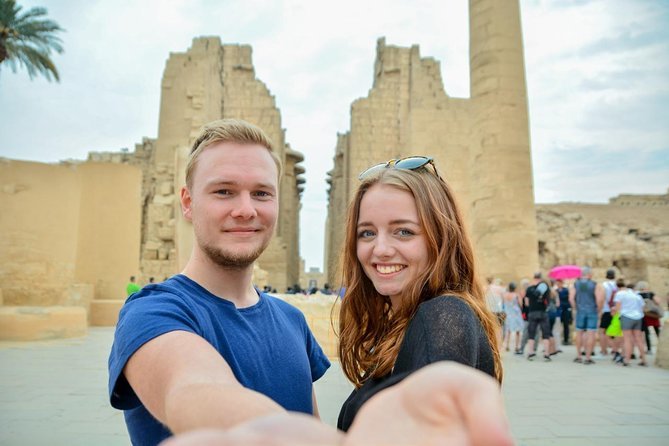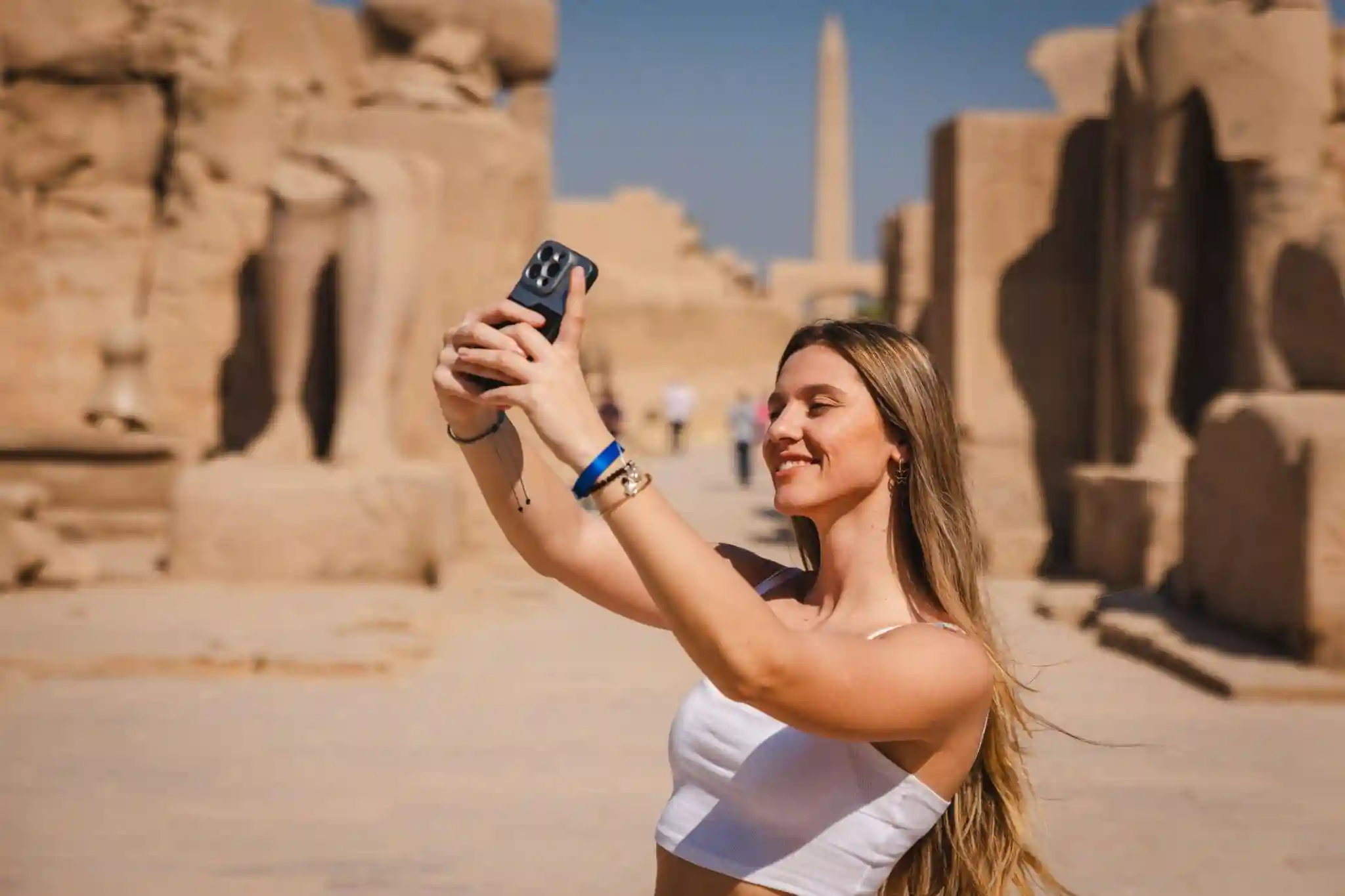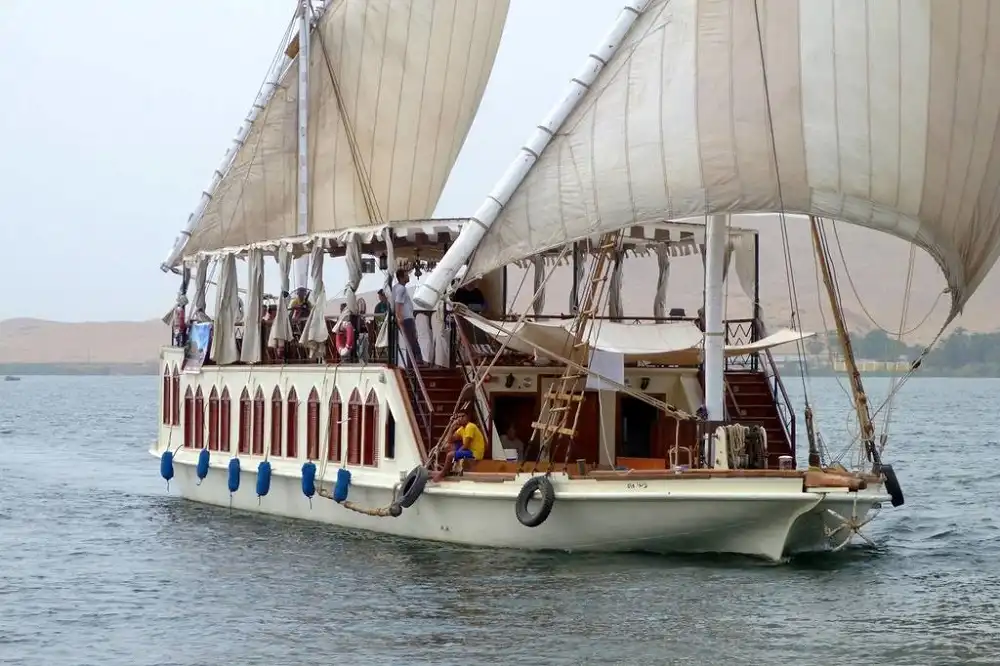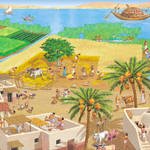Daily Life in Ancient Egypt
The ancient Egyptians loved life, as we’re blessed with ideal conditions like very fertile land and a beautiful climate. They considered their lives to be perfect, to the point that they believed that their afterlife was the eternal continuation of life on earth. Daily life in ancient Egypt focused on enjoying every single moment of time they had and making it as memorable as possible. Through their observation of the harmony and balance of the universe, they were encouraged to live in the same way in order to achieve peace and happiness with themselves and others.
Social Classes During Life in Ancient Egypt
The population of Egypt was divided into social classes in the shape of social pyramids based on their profession and role in society. At the top of the pyramids, the king and queen, the god’s chosen people, and their royal family enjoyed an unimaginable amount of status, wealth, and luxury. Second to the top, is the educated professional class, like doctors, accountants, priests, and scribes, who are believed to be chosen by the god Thoth of wisdom and knowledge. Then comes the working class, like the sailors, craftspeople, and soldiers, who played a key role in providing and protecting life in Egypt. In the lower class, the servants and the farmers who worked in the lands owned by the king, were the ones who produced the goods that helped the entire culture thrive and the necessary labor force for the construction of the pyramids and other monuments in Egypt. All of the jobs and positions in society are passed down from father to son.
Families During Life in Ancient Egypt
The concept of family is very important during life in ancient Egypt. Most of marriages in Egypt are arranged by the parents; girls are usually married around the age of 12 and boys at the age of 15. Girls would stay at home and learn from their mothers, while boys would train in the profession of their fathers and uncles. Also, most marriages are polygamous, with the husband having several wives; one of the wives considered
Daily Life in Ancient Egypt
a chief wife who is higher than the others. Divorce also existed in ancient Egypt but it’s highly rare because the Egyptians were committed to the sanctity of family unity. An unmarried man was seen to be incomplete, and boys were advised to marry as soon as possible. The structure of the family is very simple, as the wife is the mistress of the house who looks after all the household, and the husband works outside the home to earn enough money to provide for his family.
The Role of Women in Life in Ancient Egypt
Women in life in Ancient Egypt were often treated as equal to men as they were allowed to own property, conduct business dealings just like men, even testify in court, and some women were able to rule Egypt like Cleopatra, Hatshepsut, and some others. Women had the ability to obtain high-ranking jobs like administrators, supervisors, and priestesses. But their main responsibility to be a wife, a mother, and the caretaker of the home and the children above all else.
Home and Shelter in Life in Ancient Egypt
In the beginning, ancient Egyptians built their own houses, temples, and tombs out of adobe which was made of bricks made of sun-dried mud. This material fast and cheap and almost all the mud bricks have crumbled and dissolved. The houses filled with decoration, amulets, and ancient religious artifacts. The houses cool on the inside and had a flat roof, so in the summertime, people could sleep on top of them. Most of the townhomes were divided into two floors, the first floor reserved for the reception, and thetop floor is reserved as private housing for the residents. Houses were built around courtyards, and all the cooking done outside in the courtyard. All of the
noblemen’s houses larger as they had three areas while the rest of the farmers lived in modest houses.
The Nile River’s Role in the Daily Life in Ancient Egypt
The Nile represents the bloodstream and the life force of Egypt. It considered being the main form of transportation for goods, materials, and people. The Nile a line of communication between Upper and Lower Egypt and provided a very fertile land to the ancient Egyptians so they could and grow all that they needed like wheat, barley, flowers like papyruswhich turned into paper, rope, and baskets, and other crops. The Nile also played an important role as a religious entity because of the public view that found it as a gift from gods like the “God Sobek” who credited with creating the Nile. You can cruise the Nile River on board Egypt Nile cruises to witness the most famous landmarks in Egypt.
Food and Drinks in Life in Ancient Egypt
Finding food and water life in ancient Egypt not that hard as the soil was very fertile, the Nile filled with nutrition water and that’s why many crops like wheat and barley were easily found. The bread considered the source of carbohydrates and seasoned with honey, herbs, fruits, and sesame seeds. Their diet mainly vegetarian as they lived on a combination of wheat and vegetables, and fish acted as their main source of protein as the meat more expensive and difficult to come by and can only be found at the house of the elite and the wealthy. A lot of the animals ritually slaughtered and extremely hard to keep the meat fresh within the Egyptian climate. Beer also the main drink of life in ancient Egypt and consumed at every meal. Wine also found at the tables of the wealthy noblemen.
Entertainment of Daily Life in Ancient Egypt
The ancient Egyptians tried to live their life to the fullest as they engaged in everything from hunting crocodiles and hippopotamuses, and playing board games like Senet and Hound & Jackals, they even made toys for children in the shapes of animals. They’re also a lot of sports that included athletics in the early versions of teams such as swimming, earth hockey, handball, wrestling, rowing, archery, gymnastics, and many water sports like water jouster which form of sea battle played in small boats on the Nile River. The noblemen and the wealthy would throw extravagant parties filled with the finest foods and beverages. Music and dancing also found very common in ancient Egyptian culture and considered to be art forms.
Festivals in Ancient Egypt
All the festivals in the life of ancient Egypt had a unique feeling depending on the nature of the events. Most of the festivals in the life of ancient Egypt had a religious nature as all the Egyptians celebrated god’s birthday. The religious festivals held in conjunction with the lunar calendar in temples like the festival of the valley in Luxor in honor of the god Amun, the feast of Hathor at Dendera, the festival of the goddess Isis at “Busiris“, and the celebration of Bastet at “Busastis“. There also other kinds of festivals like individual birthdays, anniversaries of the great deeds of the king, funerals, and house-wearing events. There also other festivals that had unique
Festivals in Ancient Egypt
religious nature like the “WepetRenpet” which marked the beginning of the year in July at the annual Nile flooding, “The Sea Festival” held in the third reign of the pharaoh’s reign to celebrate his kingship and “The Festival of Khoiak” which honored Osiris death and revival. The Egyptians would indulge themselves in every kind of entertainment in these festivals despite the fact that self-indulgence wasn’t appropriate at every gathering. You can read more also about festivals and public holidays in Egypt these days.
Clothing and Fashion in Ancient Egypt
The ancient Egyptians wore clothes made from linen, which is a light and cool fabric woven from cotton. Both men and women wore the same material in the shape of linen kilts. Most women dressed in plain sleeved dresses. Servants and lower-class women are often shown wearing a kilt while the royal and the noblewomen shown wearing fitted dresses from the shoulder to the ankles and the noblemen seen in skirts and blouses. All the little children in ancient Egypt didn’t wear clothes until the age of ten. All of the social classes went barefoot to imitate the gods who didn’t need footwear. But when someone on a long journey or a place where they would hurt or injure their feet, they would wear sandals. The lower class would wear






